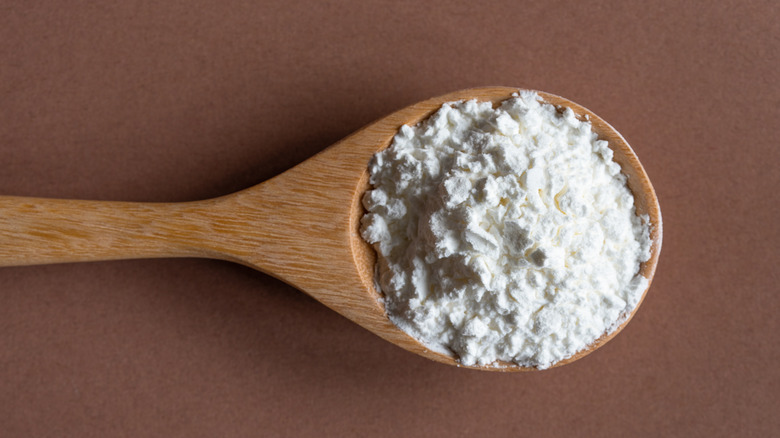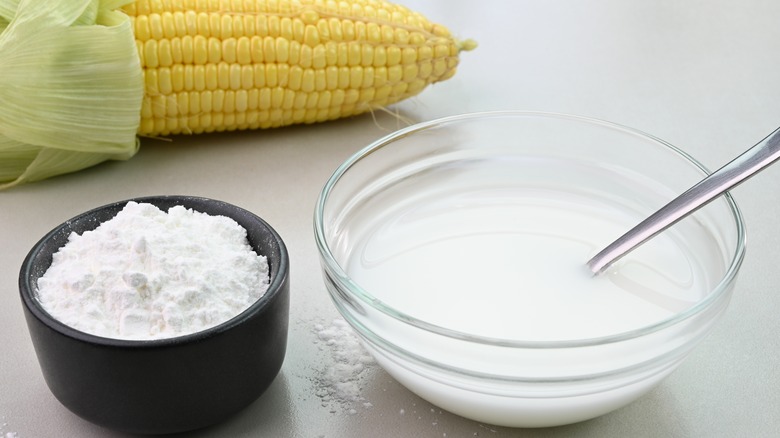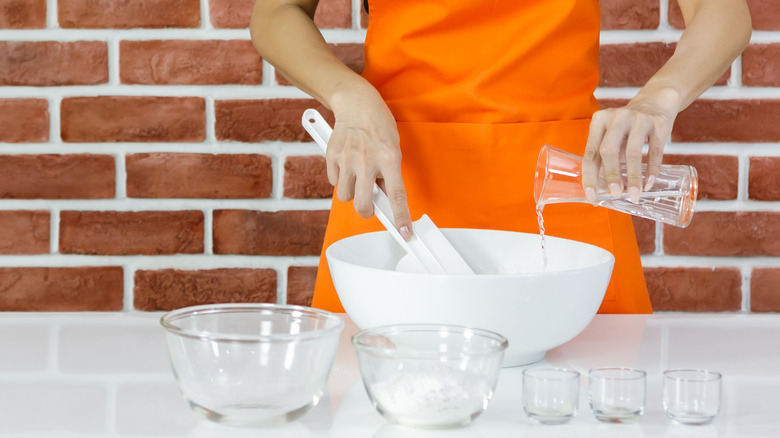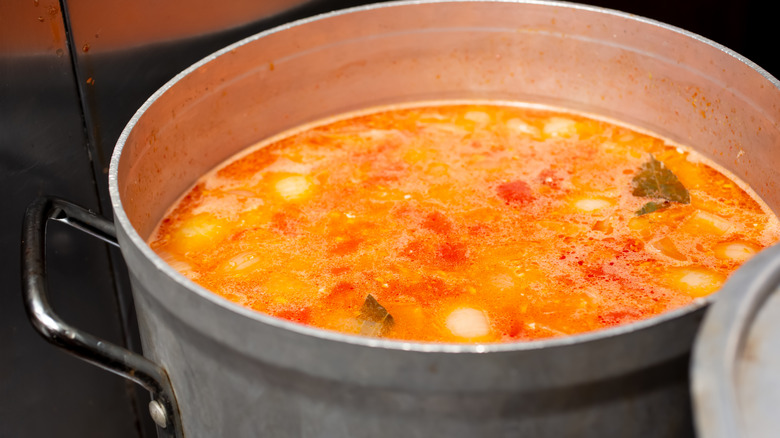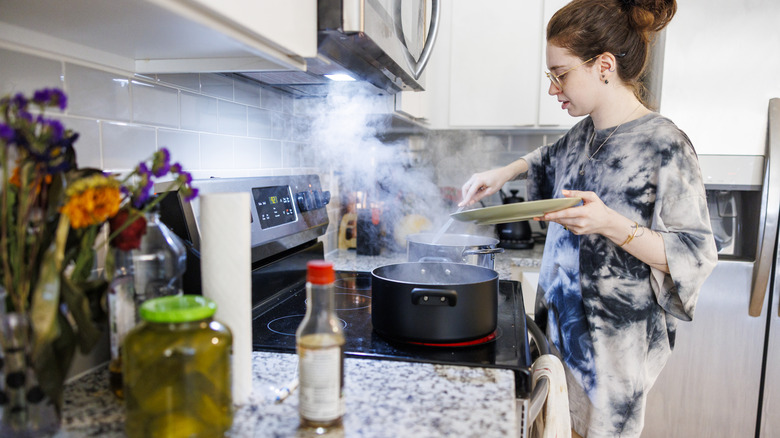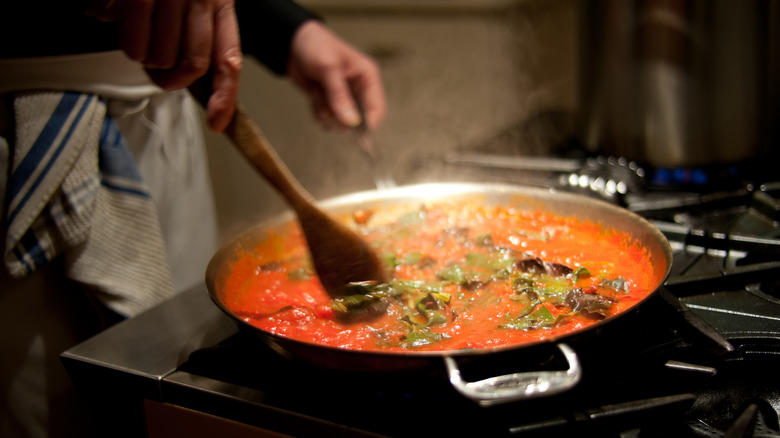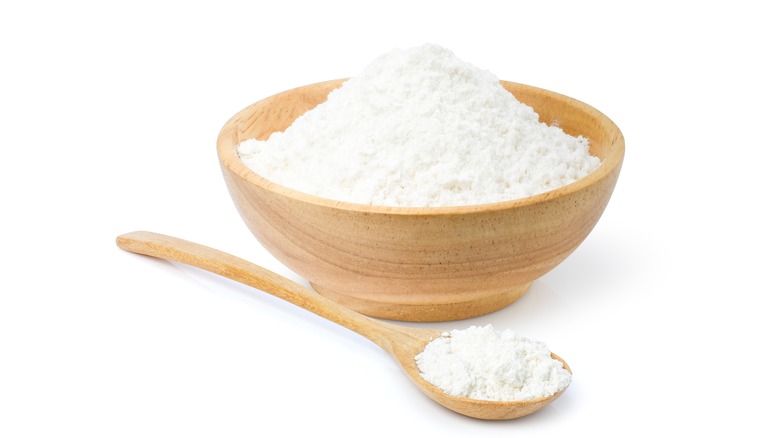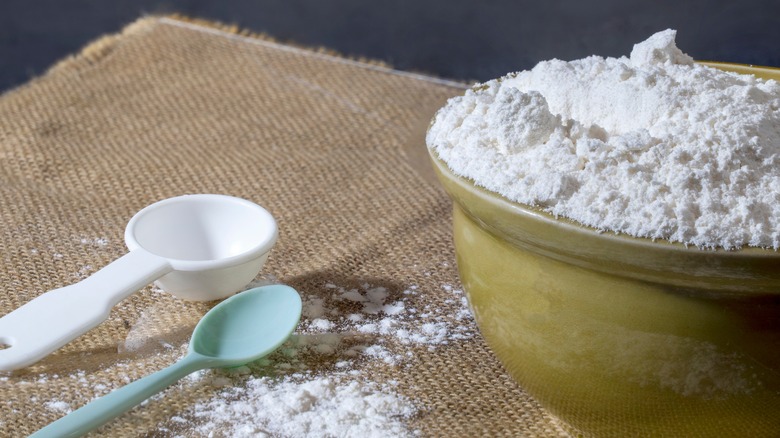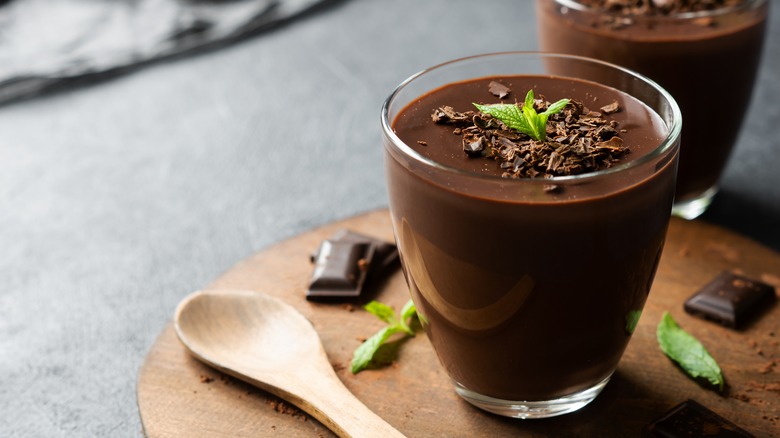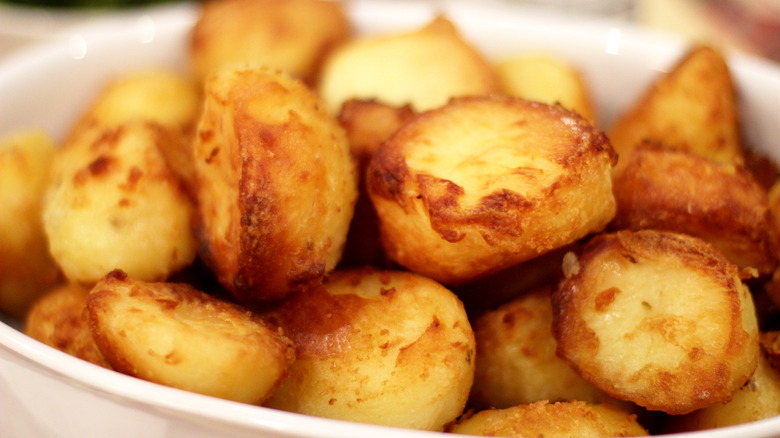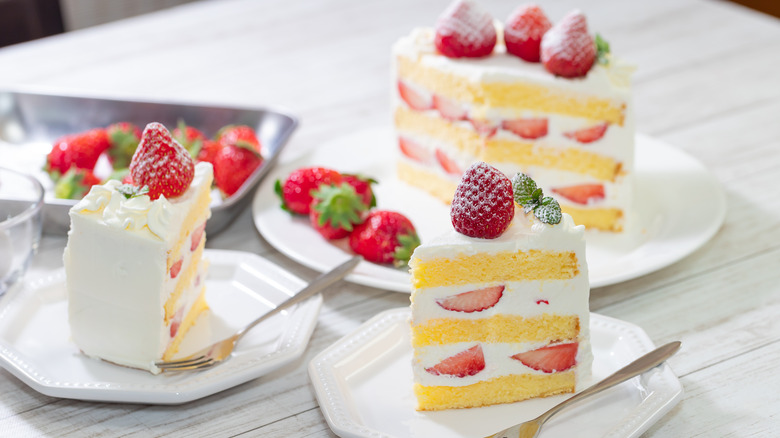Mistakes Everyone Makes When Using Cornstarch
In the culinary world, cornstarch is a quiet hero, a seemingly magical ingredient that transforms runny sauces into velvety perfection and imparts that coveted crispiness to fried delights. Yet despite its seemingly simple nature, this kitchen staple can lead many home chefs to stumble unwittingly into common pitfalls. There are several ways you can go wrong with cornstarch without realizing it.
If you've ever found your sauces less than silky or your fried dishes lacking that irresistible crunch, don't worry — you're not alone. This guide will walk you through the subtle art of working with cornstarch, unraveling the puzzles behind the missteps, and ensuring that your culinary creations reach their full potential.
So let's start to unravel the mysteries of cornstarch, remembering that mistakes are opportunities for learning and refining your kitchen prowess. Whether you're a seasoned cook or an aspiring home chef, understanding the nuances of cornstarch will open up a range of opportunities. Keep reading; we'll soon have you confidently wielding cornstarch like a master chef. Get ready to debunk the myths, sidestep the pitfalls, and unlock the secrets to perfecting your dishes with this unassuming kitchen helper. Here are some of the top mistakes everyone makes when using cornstarch.
Not making a slurry before adding it to liquids
Yes, cornstarch is great for thickening soups, sauces, and stews. But if you just throw it in there in its powdered form, you'll end up with a lumpy mess. Crafting a cornstarch slurry ensures a silky, lump-free consistency.
But what exactly is a cornstarch slurry? Well, it's simply water and cornstarch. Mixing cornstarch with water before adding it to the recipe you want to thicken keeps the cornstarch from clumping and creates a smooth mixture that seamlessly integrates into your dish.
Now you know about cornstarch slurries, you should learn how to make them. Firstly, you measure the amount of cornstarch you need. If you're not sure how much it will take to thicken your dish, start conservatively — you can always add more, but an over-thickened dish is trickier to remedy. Next, measure out the water. You should aim for a 1:2 ratio of cornstarch to water by volume. So for every tablespoon of cornstarch, add two tablespoons of cold water.
Finally, just mix the components thoroughly until you achieve a smooth, lump-free consistency. A whisk or fork works wonders in ensuring the slurry reaches its optimal texture. Once your cornstarch slurry is prepared, introduce it to your simmering dish gradually, stirring continuously. By embracing the cornstarch slurry technique, you sidestep the common mistake of uneven thickening or cornstarch lumps in your food. Your sauces will be smoother, your soups more sumptuous, and your stir-fries perfectly coated.
Not mixing the slurry thoroughly
Now that you've uncovered the secret of the cornstarch slurry, your cooking journey has just begun. It's not just about knowing the ingredients; it's about executing the process with precision. We can't overstate the importance of mixing a cornstarch slurry properly, as this crucial step determines the texture, consistency, and overall success of your dish. Remember that lumps are the enemy, and a well-mixed slurry is your shield. The key is dissolving the cornstarch thoroughly in cold water, creating a seamless blend that perfectly integrates into your recipe. When you achieve a lump-free mixture, you get a velvety finish rather than encountering unwelcome clumps that ruin your dish.
Proper mixing is the key. Before you introduce the slurry to your simmering dish, whisk it thoroughly so the cornstarch and water mix completely. Leaving the slurry to sit before adding it can lead to the formation of stubborn lumps, sabotaging the smooth consistency you're aiming for. So either whisk it up and use it promptly or, at the very least, give it a thorough re-mix before use.
Some people wonder why they're getting lumps when they use cornstarch as a thickening agent — and this is often the culprit. So if you're using a slurry and still getting lumpy or uneven results, make sure you're mixing that slurry well enough.
Using hot water in a cornstarch slurry
When preparing a cornstarch slurry, the temperature of the water you use plays a crucial role in achieving the desired consistency and avoiding lumps. Opting for cold water rather than hot water is a key step in this process. Cold water is essential because it prevents the cornstarch from clumping together upon contact. Cornstarch, when mixed with hot water, tends to create lumps, making it challenging to achieve a smooth, evenly thickened texture in your dishes. Using cold water allows the cornstarch to disperse more easily, ensuring a homogeneous mixture.
The science behind this lies in the behavior of starch granules. When cornstarch is directly introduced to hot water, the granules tend to bind together rapidly, becoming gelatinized and forming lumps that are difficult to dissolve. On the other hand, with cold water, the starch particles disperse more gradually, allowing for better control over the mixing process. We've already explained the ratios you should use to make a slurry and why it's important to mix it thoroughly, but water temperature is another weapon in your arsenal in the fight against lumps. So the next time you're thickening a sauce or soup with cornstarch, remember to reach for the cold water to ensure smoothness and a pleasant consistency.
Failing to bring it to a boil
You've added the cornstarch slurry to the dish you want to thicken, and you've been stirring for ages, but you've got a dish that's just as watery as it was before, now with added cornstarch. What's the deal? Well, a common mistake people make is neglecting the critical final step: bringing the dish to a boil after adding the cornstarch slurry.
The science behind this culinary step lies in the unique properties of cornstarch. While it has the remarkable ability to turn liquids into thick, luscious mixtures, it requires heat to fully unleash its potential. When exposed to high temperatures, the starches within cornstarch undergo gelatinization.
Gelatinization is the key to achieving the desired thickness in your dish. As the liquid heats up, the starch molecules in the cornstarch absorb water and swell, which gives them their thickening power. This process creates the sought-after velvety texture and consistency in your sauces or gravies.
Here's where the crucial step often gets overlooked: Some may add the cornstarch slurry and assume their job is finished. However, to get the thickening properties you want, the cornstarch needs to be heated. While it only really needs to be heated to around 203 degrees Fahrenheit — just under boiling point — to thicken, bringing it to a boil is an easy way to make sure you've hit that temperature without needing a kitchen thermometer.
Boiling it for too long
Now, we know you need to heat cornstarch sufficiently to thicken it, but there's a common pitfall that many encounter: the risk of overcooking the cornstarch mixture. In a cruel joke from the culinary gods, cornstarch needs heat to thicken sauces, but too much or prolonged heating reverses the process and leaves you with a watery mess. Cornstarch relies on the delicate balance of heat and time. While heat triggers the gelatinization process, time plays a crucial role in maintaining the integrity of the starch molecules. Boiling the mixture excessively disrupts this harmony, jeopardizing the structure of the thickened sauce you've worked so hard to achieve.
When a cornstarch mixture is boiled for an extended period, the starch molecules — having undergone gelatinization — start to break down. This breakdown weakens their ability to hold onto the liquid, resulting in a loss of thickness. In essence, the sauce reverts to its pre-thickened state. Avoiding this culinary pitfall requires a keen awareness of your cooking process. Once your sauce reaches the desired thickness, it's time to turn off the heat. Keeping it warm is acceptable, but a prolonged boil or simmer is the enemy of a well-thickened dish. This might seem daunting, but once you've got the hang of it, you'll wonder what you were ever worried about.
Not using the right amount
In the delicate alchemy of the kitchen, precision is your trusted ally, especially when wielding cornstarch. It's easy to misjudge the proportions, leaving you with something that's over-thickened or not thickened enough. For optimal thickening, the golden ratio is a tablespoon of cornstarch dissolved with two tablespoons of water in a slurry for each cup of liquid you want to thicken in a recipe. This is a good place to start to help you navigate the fine line between too-runny and overly gelatinous outcomes. Too sparing an application, and you risk falling short of the desired thickness; too generous, and you might find yourself with an unexpectedly pasty concoction.
However, you should acknowledge that this ratio is not an immutable law but rather a guiding principle. Variations in recipes, preferences, and the type of dish may nudge the needle slightly in one direction or another. Adjustments are part of the culinary journey, granting you the liberty to tailor each creation to your preferences or the needs of a particular dish.
Mastering the art of cornstarch demands a mindful balance. So always start with a tablespoon for each cup of liquid in the recipe. From there, you can carefully add more liquid to thin out your dish (though you'll need to mix thoroughly to avoid any lumps or uneven areas), or you can add a bit more cornstarch in slurry form to get a thicker result.
Adding the cornstarch slurry all at once
In the art of cooking, gradually adding the cornstarch slurry is like refining a painting with subtle strokes. It's a methodical process that allows you to manage the thickness and texture of your dish with finesse. Imagine it as a thoughtful layering of flavors and consistency, where you control the pace and thus ensure a smooth integration.
The gradual introduction of the slurry helps avoid the risk of over-thickening, offering a chance to adjust the consistency according to the dish's requirements. On top of this, adding the cornstarch slurry slowly helps address the issue of lumps or clumps. Whisking it in allows the starch particles to disperse evenly, contributing to a seamless integration into the dish. This patient technique ensures a lump-free, velvety texture, signifying a well-executed cornstarch thickening method.
Sure, it might take you a little longer, but it's well worth gradually incorporating cornstarch into your recipe. This method is a great way to avoid lumps and uneven thickening, leaving you with the best possible consistency. If you've been avoiding any of the more common mistakes above and lumps are still an issue, then adding your slurry gradually is the next logical step. Make sure you keep stirring as you add it to your recipe, as this further reduces the chance of clumps and unevenness.
Using it as a 1:1 substitution for flour
When it comes to thickening agents in cooking, transitioning from flour to cornstarch requires adjusting the quantities. Flour and cornstarch serve the same purpose, but they have different thickening abilities. So if you're used to thickening liquids with flour and want to give cornstarch a go, you need to be prepared to make some adjustments.
Avoid a 1:1 substitution between flour and cornstarch. Cornstarch is more potent in thickening, so you only need about half the amount compared to flour. If you use the same quantity of cornstarch as you would flour, your dish might end up thicker than intended. Rather than having a thick but still liquid, velvety smooth sauce, you'll end up with something dense and gelatinous. And sure, you might be able to fix it by adding more liquid, but you risk creating lumps. Plus the ratio of other ingredients will now be off, changing the flavor of your dish and potentially leaving it underseasoned.
Using cornstarch effectively requires understanding its concentrated thickening power and adjusting your measurements accordingly. Instead of treating them as equals, appreciate the unique qualities each brings to the thickening process for successful culinary outcomes. But it's an easy adjustment. Usually you'll want to use four tablespoons of flour in a recipe; just use two tablespoons of cornstarch — it's that simple.
Only using it in savory food
Cornstarch, a versatile kitchen staple, isn't confined to savory dishes. It effortlessly transcends into the realm of sweets, bringing its unique thickening prowess to elevate desserts. So, if you've only ever used it in savory dishes, that's a mistake you should fix. One application of cornstarch in the dessert domain is its contribution to creating smooth, creamy puddings. Whether you're crafting a classic vanilla or exploring the rich depths of chocolate, cornstarch helps your pudding achieve the perfect consistency, transforming it from a liquid mixture into a delectable, spoonable delight.
Beyond the realm of puddings, cornstarch finds its way into pie fillings, enhancing the texture and ensuring that every slice boasts a flawless consistency. Picture a warm, fruit-filled pie with a perfectly thickened filling, thanks to the magic of cornstarch. Its ability to bind and thicken fruit juices creates a sumptuous interior. It's also great when crafting homemade sauces and glazes for desserts. Whether you're whipping up a glossy fruit compote or a decadent pastry cream, you can use cornstarch as a thickener to make your sauce or glaze the perfect consistency for your creation.
What's more, cornstarch plays a pivotal role in crafting delicate and tender baked goods. When included in recipes for cookies, cakes, or muffins, it contributes to a soft and tender crumb. So next time you're baking up a storm, don't forget about cornstarch — it might be just the ingredient you need.
Not using it to make foods crispy
Cornstarch goes beyond its traditional thickening role to emerge as a secret ingredient for achieving unparalleled crispiness in a variety of dishes. Whether you're deep-frying, shallow frying, or roasting, cornstarch steps into the culinary spotlight, transforming ordinary ingredients into irresistibly crispy creations.
If you want that coveted crunch when frying, cornstarch reigns supreme. In the deep fryer or on the stovetop, it forms a golden, delicate crust around foods, creating a satisfying crispiness that delights the senses. Tofu, often challenging to crisp up, undergoes a magical transformation with the aid of cornstarch. It emerges from the fryer with a tantalizingly crispy exterior that gives way to a soft and flavorful interior. And it works well on the stovetop with just a little oil for shallow frying, too.
In the realm of roasting, cornstarch proves its versatility once again, especially when crafting the perfect roasted potatoes. The fine texture of cornstarch adheres to the potatoes, forming a delicate, crisp layer that adds a delightful crunch to every bite. Unlike standard all-purpose flour, cornstarch boasts the added benefit of being gluten-free, making it an inclusive choice for those with dietary restrictions. We also love that you can add your choice of seasonings to your cornstarch mixture, easily injecting extra flavor into your recipe.
Not trying it as an egg substitute in baking
Did you know that you can use cornstarch as an egg replacer? Whether you're navigating the nuances of dietary preferences or allergies or you simply got halfway through a recipe before realizing you were out of eggs, cornstarch steps in to bridge the gap. It offers a solution that ensures the success of your baked goods without compromising on texture or taste.
Crafting an egg substitute with cornstarch is easy. To replace one whole egg in your recipe, combine one tablespoon of cornstarch with three tablespoons of water. This simple mixture mirrors the binding properties of eggs, allowing you to seamlessly incorporate it into your favorite cakes, cookies, and similar baked treats.
It's worth noting that while cornstarch performs admirably in most baked goods, there are specific scenarios where its charm might not hold the same sway. Recipes that hinge on the ethereal fluffiness achieved by whipped egg whites or those calling for a generous ratio of eggs to flour may not accept cornstarch as the ideal substitute. In these instances, the delicate balance of ingredients necessitates a more tailored approach to maintain the intended texture and structure of the final dish.
